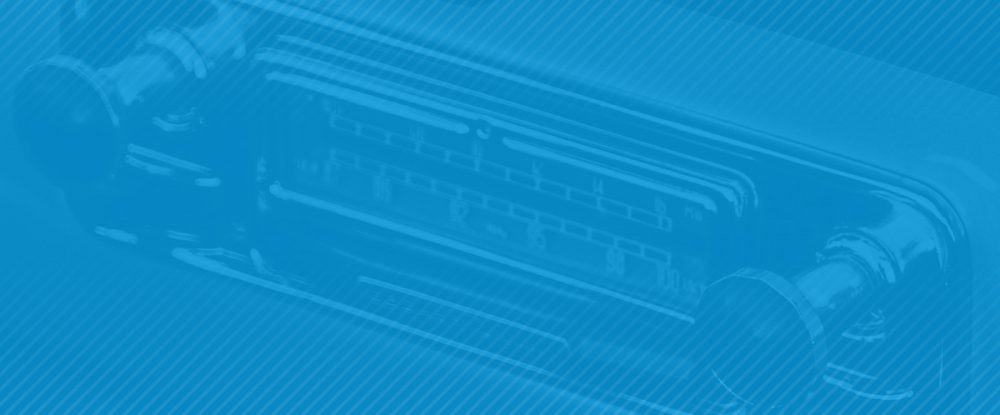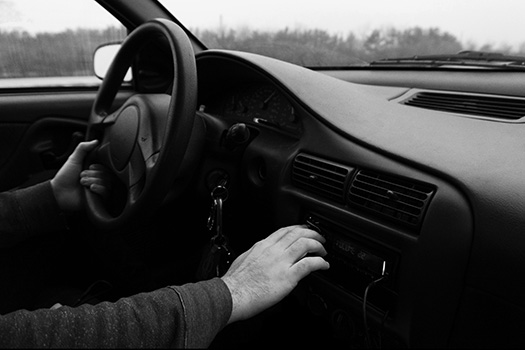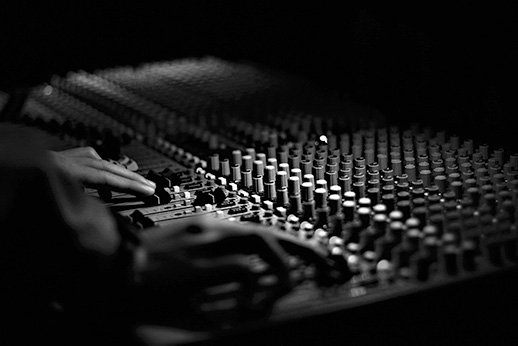
How to: Get it on the radio
Over the years we’ve been fortunate to have produced more radio spots than we can count. I say fortunate, because for us, working in radio has always given us the opportunity to stretch ourselves creatively while collaborating with a host of really fun, really talented people.
While the radio itself may no longer hold a prominent place at the center of the modern American household, both traditional radio and its 21st century counterparts—satellite radio and podcasts—remain an active component of our everyday lives.
As a (mostly) affordable and reasonably targetable medium, radio can be an effective stand-alone tactic or a great supplemental piece to a larger mixed-media campaign.
If you think that radio might be right for you, or have recently been tasked with creating a spot yourself, here are some basic steps you should take to get a spot that both works and is something you can be proud of.
Six steps to a great radio spot
1. Write a great script.
When you’re looking at producing a radio spot, you have a few things working against you.
First, your audience is usually on the go and may or may not be completely focused on what’s coming out of their car’s speakers or AirPods.

Second, beyond what is going on within their own heads, your audience is also being bombarded with countless other messages vying for their attention.
And, last but not least, you only get to appeal to one sense. Unlike TV or even print, you can’t rely on flashy visuals to draw your audience in.
But rather than looking at these drawbacks as limitations, try to look at them as opportunities.
Without the crutch of visuals to rely upon, working in radio forces you to unleash your creativity and play within the “theatre of the mind.”
To do so, spend some time playing around and try to break out of the conventions of what you think of as a radio spot. Then develop a scene in your head and write to it—starting with something that will cut through the clutter and make your listener stop and actually listen.
While you’re writing, be sure to also think of all of the sound effects and accompanying music that will help bring your scene to life and be sure to jot them down as well. To help keep everything organized and easy to follow later on, we recommend setting your document up into two columns with sounds effects on one side and the script on the other.
Once you have your script where you think you want it, read it out loud (slowly and dramatically) and time it. Chances are you’re going to be well over your allotted 30 or 60 seconds. If so, edit, edit and edit again. Just because you like a certain turn of a phrase doesn’t necessarily mean it needs to stay. Like they say, “write hot and edit cold.” But, in doing so, the one thing you’ll never want to sacrifice is a strong, easy to remember call to action.
2. Choose professional talent.
Now that you have your script, your next step is to find a voiceover actor that will both connect with your audience and deliver the performance you’re looking for.
Finding great talent is easier now than ever before thanks to sites like Voices.com and Voice123.com. With services like these, you can search thousands of professional voiceover actors based on the parameters you decide—things like sex, age, ethnicity, tone or specific character traits. And best of all, most of the time, the talent on these sites will audition for free— allowing you to hear them reading your actual words before you commit.
But we can’t stress the importance of using professional talent enough.
When you’re on a tight budget, often a radio station will offer to produce your spot for free using on-air talent. But, if you can, avoid this at all cost. While these are generally great and are simply trying to help, they’re not professional voiceover actors and are often recording their takes between their time on air and are looking to get them done as quickly as possible.
Oh, and while you may think it will help your spot to have a recognizable voice on it, in reality that voice isn’t going to actually make people stop and listen, instead it is going to just blend in to the station’s normal broadcast.
The other trap to try to avoid is the use of someone from the company or the client you’re working for (the owner, the president, the marketing director, etc.) as the voice talent. This almost never results in a professional sounding spot and can lead to some rather uncomfortable conversations.
3. Work with a good engineer/production company.
As with everything, the world of audio production has changed a lot in the last 15 years.

Today, virtually anyone with a computer can record, produce and engineer a spot in a matter of hours if not minutes. But like our advice about using on-air talent, we would usually advise against it. So, while the talent you choose through Voices.com or Voice123.com will often be more than happy to mix your spot, remember that, in most cases, it isn’t their specialty.
Instead, we recommend working with a professional production company who you can either send a file of your voiceover to or just get them involved from the very beginning. (Some places we have worked with in the past include Studio Center, Wheeler Audio and City Tracks).
The engineers you’ll work with at these companies are highly trained, have a tremendous amount of resources at their disposal and can be an extra set of ears to catch anything in a specific take that can be improved upon.
4. Sit in on the recording session.
Just because you’re working with trained professionals doesn’t mean you don’t have something to offer in the production process—after all, up to this point, the spot has really only existed in your head.
And, thanks to modern technology, you can now be in the same room with whoever you’re working with no matter where in the world they are (for example, I once produced a spot where I was in Wichita, the engineer was in Las Vegas and the talent in London) so you really have no excuse not to.
If you do, be sure to talk to the talent and the engineer before the session to share your vision by providing reference points (especially those from the voiceover actor’s own reel) and notes on pacing and mood.
During this point, it’s also important to try to develop a friendly, relaxed rapport which will make the session go smoother and deliver a better performance.
When it comes to the actual recording process, be sure to have your script in front of you during each take and make notes on specific things you want emphasized as well as inflections, pronunciations, tone and pacing.
Now, if you’ve made it this far in this post, I am going to reward you with the biggest and best radio production tip I have.
Whenever you think you have a take (or takes) that will work, always do one more. Set it up as “just doing one for fun” and give the talent the freedom to try something new. In my experience, 75 to 90 percent of the time this will be the take you’ll actually end up using. I don’t know why it works, but it almost always does.
5. Listen closely to the “final” mix.
With the recording done, all that’s left to do is adjust the levels, smooth things out a bit and add in any music or sound effects.
Most of the time the engineer will do this without you on the line and will just send you a spot to listen to later in the day. When he or she does, don’t be afraid to give input. Just because it sounds final, doesn’t mean it is. If you don’t like how loud the music is or hear a distracting breath in-between sentences, say something. The engineer will always work with you until you are happy.
6. Get it in the right format.
The engineer you’re working with most likely does this work all day, every day so they probably already know exactly what kind of file you’ll need to get your spot on the air. But that said, it is never a bad idea to check with the station you’ll be running on or your media partner to find out exactly what they need in order to avoid a hiccup later on.
And, if your engineer offers you the spot in a variety of formats, take them all. You never know what you might need in the future.
Wrapping up
Despite the length of this post, don’t be frightened of getting into radio because it can be both a fun and effective tool for reaching your marketing goals. To give you some final insight in how a spot ultimately comes together, here is an example of one we created for the Kansas Health Foundation along with the original script we used to produce it.